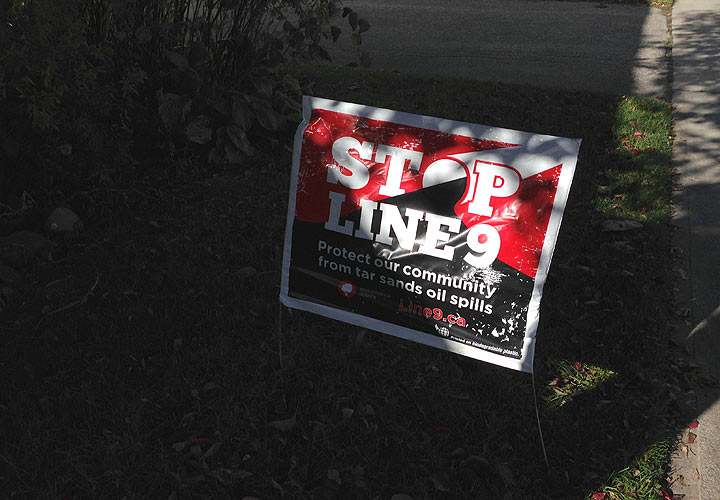TORONTO – The National Energy Board has approved a proposal to let Enbridge reverse the flow and increase the capacity of a pipeline between southern Ontario and Montreal, subject to conditions.

Read the reason for the decision here
Most of the conditions deal with the capacity expansion component of Enbridge’s application, which would increase the pipeline’s volume from 240,000 barrels per day to approximately 300,000.
The board says the decision allows Enbridge to “react to market forces and provide benefits to Canadians,” in a “safe and environmentally sensitive manner.”
Enbridge spokesperson Graham White called it “the right decision. The benefits are clear.”
But Greenpeace Canada says the decision is another example of the federal government and oil industry rewriting environmental laws to fast-track oilsands pipelines approvals.
“These drastic changes barred thousands of Canadians from participating in decisions that will affect their air, water and health for decades to come and banned any consideration of the climate change impacts of this project,” Climate and Energy Campaign coordinator Keith Stewart said in a statement.
“The result is a deepening of our addiction to dirty oil with no space to discuss alternatives.”
WATCH: Toronto group opposes National Energy Board’s decision on Line 9
The decision on Line 9 comes four months after the federal regulator held public hearings in Montreal and Toronto on the Calgary-based company’s proposal.
The three-member panel heard from First Nations, environmental groups, private citizens and representatives from municipal and provincial governments.
Enbridge’s final submissions were delivered in writing after the final day of Toronto hearings was cancelled by the board due to protest-related security concerns.
White said Enbridge is still reading through the 30 conditions in the National Energy Board’s approval and wasn’t yet sure if the construction completion date of late 2014 is realistic. But the conditions are “not too far from what we’d expect,” he said. “In fact, some of these we have already undertaken.”
Line 9 runs through many communities in Ontario and Quebec – cutting through rivers, parks, backyards and transit corridors in some of the most heavily populated areas of the country.
It initially shuttled oil from Sarnia, Ont., to Montreal, but was reversed in the late 1990s in response to market conditions to pump imported crude westward.
You can view a detailed map of Line 9′s route here.
Enbridge now wants to flow oil back eastward to service refineries in Ontario and Quebec.
The company also wants to change the rules to allow heavy crude to be transported on the line. Right now the pipeline carries light crude oil.
Opponents argue the Line 9 plan puts communities at risk, threatens water supplies and could endanger vulnerable species in ecologically sensitive areas. They argue the 38-year-old pipeline was never intended to transport heavy crude.
To allow it to flow through pipelines, tar-like bitumen is mixed with diluents the Natural Resources Defense Council says are highly corrosive – raising the risk of pipeline corrosion and oil spills.
Enbridge argues diluted bitumen isn’t corrosive, citing a study from U.S.-based National Academy of Sciences. The study said that diluted bitumen doesn’t have a unique property that would make it any more corrosive than other crude oils.
Taking lessons from the popular repudiation of its proposed Northern Gateway pipeline in British Columbia, Enbridge went on the offensive when it came to convincing residents in Ontario and Quebec that its plans for Line 9 would be safe.
In the publicity campaign it launched along with its application, Enbridge has insisted that safety is its top priority and has characterized the project’s scope as “actually very, very small,” stressing that the products flowing through the line won’t erode it.
Line 9’s opponents pointed to a 2010 Enbridge spill in Michigan, which leaked 20,000 barrels of crude into the Kalamazoo River.
Some opponents also suggest the Line 9 reversal is ultimately so Enbridge can transport oil to the Atlantic coast for export – which the company denies. “There are no plans, concepts or proposals to move the product anywhere east of Montreal – or south, for that matter,” White said.
A portion of the line had received approval for reversal prior to Thursday’s decision and has been transporting oil from Sarnia to North Westover, Ont. – about 30 kilometres northwest of Hamilton – since August.
The company knows it still has no shortage of opponents to win over.
“There are concerns and we want to work to address those,” White said. “This is far from the end of the conversation.”
With files from Global News reporter Heather Loney and The Canadian Press


Comments